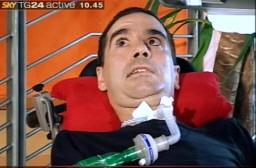Money from Italy's World Cup qualifier against Montenegro later this month will be used to set up a new research unit on Lou Gehrig's disease, the Italian Soccer Federation (FIGC) said Tuesday.
Lou Gehrig's disease, a killer nerve-wasting condition whose scientific name is Amyotrophic Lateral Sclerosis (ALS), appears to strike ex-soccer players much more than the general population.
The FIGC said 150,000 euros ($210,000) of the gate receipts from the October 15 game in Lecce would help former Italy squad doctor Paolo Zeppilli form a team to investigate the illness.
''I have to thank (FIGC chief Giancarlo) Abete for this chance,'' Zeppilli said.
''We all wanted to do something''.
He said a panel would choose young researchers and use three labs to study players' DNA and try to find the causes of ASL.
''The upsetting thing is you see more ALS in the soccer community. Some say it could be due to doping but if that's the case then why aren't other sports similarly affected''?
A new drive on Gehrig's was sparked by the news earlier this month that former AC Milan and Fiorentina striker Stefano Borgonovo was suffering from it.
Borgonovo, 44, is the second well-known player to be hit by ALS, a form of motor neurone disease whose more popular name comes from the US baseball player who became the first sports star to die of it in 1941.
It killed ex-Genoa captain Gianluca Signorini in 2002 at the age of 42.
The TV images of the bed-bound and paralysed Borgonovo, and his vow, in a computer-generated voice, to beat the disease, shocked the soccer world but rallied support.
His former clubs AC Milan and Fiorentina arranged a fundraising game for October 8.
Borgonovo, who played with Roberto Baggio in Florence and was Marco Van Basten's understudy at Milan while winning three Italy caps, has set up a foundation to aid research into Gehrig's.
''I want to find the money for researchers to find the penicillin of 2008,'' he said.
Borgonovo, who scored 14 goals in his 1989 season with Fiorentina and netted the winner that put Milan through to its second straight winning Champions League Final in 1990, first started showing signs of the disease in 2005, when he began losing control of his speech.
Like other Gehrig's patients, his descent has been swift and he now has no control over his arms, legs or most body functions including speech.
TURF CHEMICALS MIGHT PLAY A PART, SAYS PROSECUTOR.
Raffaele Guariniello, a Turin prosecutor who is investigating the early deaths of 35 ex-footballers from Gehrig's, said:
''Among the hypotheses we are focusing on are the use of doping substances and the repetitive stress or cumulative trauma of being hit on the legs or heading the ball so much.
''A third hypothesis, which we are putting a lot of work into, is the use of toxic substances to maintain pitches''.
Guariniello said the latest data indicated that professional soccer players were six times more likely to get Gehrig's than others.
His team has just completed a survey of former basketball players and cyclists, failing to find one case.
In another, ongoing probe, it has yet to uncover any incidence of ALS among rugby players.
''There seems to be some factor that is specific to soccer, which we are trying to identify''.










